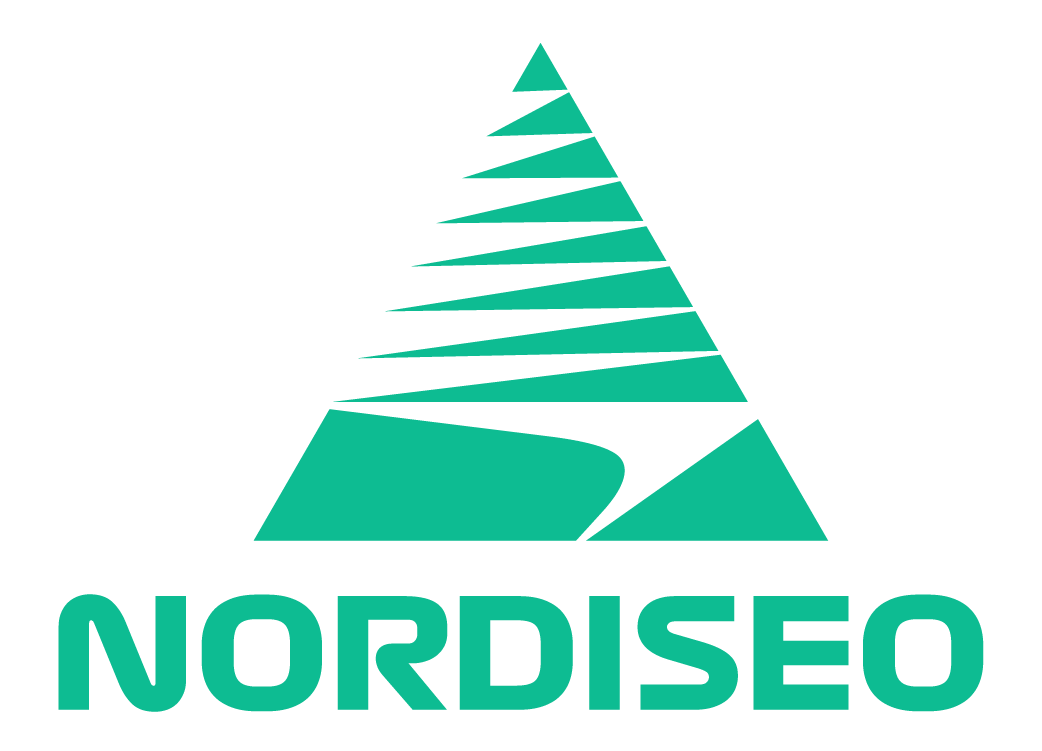As 2024 has landed, the online world is changing rapidly. This makes having a strong, up-to-date SEO strategy more important than ever. Companies looking to be seen online need to adapt to these changes, moving away from old methods and embracing new, more effective techniques. Nordiseo is here to help businesses understand and tackle the complexities of SEO with its focused, results-driven approach.
In this article, we’ll explore what makes an effective SEO strategy, combining the latest industry insights and advanced techniques with Nordiseo’s specialized know-how.
We aim to help your business not just get by, but really succeed in the coming year. Our practical tips will guide you through the intricate world of search engine optimization. We’ll show you the best strategies to get to the top of search rankings and stand out from your competitors in 2024.

What is an SEO strategy?
An SEO strategy is a comprehensive plan designed to increase a website’s visibility and ranking on search engine results pages (SERPs). The goal is to attract more organic traffic by aligning with search engine algorithms, which involves a multitude of techniques and practices tailored to a website’s unique needs and objectives. At its core, a winning SEO strategy is data-driven, actively responds to evolving search trends, and is deeply rooted in understanding user behavior and preferences.
A successful SEO strategy encompasses:
- Thorough analysis of the competitive landscape
- Audit and optimization of the website’s technical infrastructure
- Creation and curation of high-quality, relevant content
- Strategic keyword research and implementation
- Continuous performance monitoring and adjustments
Understanding the Pillars of SEO
SEO stands on three pillars: technical structure, content relevance, and domain authority. Each is key to the edifice of visibility and requires meticulous attention. Technical SEO is about optimizing the nuts and bolts of a website so that search engines can crawl and index it without issues. This includes improving site speed, ensuring mobile-friendliness, and securing the site with HTTPS.
Next, On-Page SEO covers the optimization of content for both users and search engines. It revolves around keyword placement, quality of content, and user experience. On-page elements like title tags, headers, and images need to be optimized for target keywords while maintaining natural readability for users.
“Off-Page SEO encompasses actions taken outside of your own website to impact your rankings within SERPs.”
James Bull – Nordiseo
Lastly, Off-Page SEO is the process of building credibility and authority for your website by acquiring backlinks from other reputable websites. It’s about showing the search engines that your site is a trusted resource, which can significantly impact your rankings.
These pillars must be balanced and continuously refined to build a robust SEO strategy—and this is where Nordiseo excels. With a profound understanding of each element, they help clients achieve a competitive edge through internal linking and other on-page and off-page SEO techniques.
Technical SEO: Ensuring a Strong Foundation
Technical SEO is the backbone of a site’s relationship with search engines and a critical component of any SEO strategy for 2024. In-depth technical audits and optimizations guarantee that websites comply with search engine guidelines and can be accessed and indexed efficiently, which is fundamental for achieving top SERP positions.
This facet involves a broad range of actions from optimizing load times to ensuring responsive design for all devices. A website’s architecture also plays a pivotal role; a clean and logical structure aids both search engine bots and users in navigation.
With user experience becoming increasingly important for SEO, the integration of structured data is crucial for improving how bots understand and display the site’s content in the SERPs.
On-page SEO: The art of content optimization
On-page SEO is the fine art of crafting web content that effectively communicates with both search engines and visitors. This nuanced process begins by weaving meticulously researched keywords into your content. Great care is taken to ensure these keywords blend seamlessly, maintaining a natural tone and readability for the audience. The goal is to create a harmonious balance between content that is relevant and engaging to users.
Key strategies in on-page SEO include the strategic placement of keywords not just in the visible text like titles and headings, but also subtly throughout the body of the content. It also encompasses the optimization of visual elements, such as images and videos.
This involves careful attention to details like alt tags and file names, which help search engines understand and categorize the visual content. Another crucial aspect is enhancing the overall readability of the content, achieved through techniques like using short paragraphs, incorporating subheadings, and breaking down complex information into digestible pieces.
Moreover, effective on-page SEO includes crafting compelling call-to-action prompts. These prompts are designed to guide users, encouraging them to interact in ways that align with the website’s goals.
Off-page SEO: Building authority beyond your domain
Off-page SEO is essential for demonstrating your website’s authority and relevance to search engines, which predominantly involves building a portfolio of backlinks from reputable sources. It’s the digital equivalent of a good reputation in the real world.
The more high-quality backlinks you have pointing to your site, the more search engines infer your content is valuable and trustworthy. Beyond link building, off-page SEO also encompasses social media marketing, influencer collaborations, and brand mentions across the web.
To effectively build off-page SEO, consider the following:
- Engaging in genuine outreach to establish connections with industry leaders.
- Creating shareable content that naturally accrues backlinks and social signals.
- Participating in online communities and forums relevant to your niche.
With off-page SEO, the objective is to generate organic endorsements of your website, compelling search engines to regard your content with greater esteem and rank it higher in search results.
Identifying Target Keywords
Identifying target keywords is a strategic process that serves as the linchpin for any SEO campaign. It’s about understanding not just what your audience is searching for, but how and why they’re searching for it. Effective keyword research digs into the psyche of potential customers, uncovering the search terms that will drive the most valuable traffic to your website. This endeavor is multifaceted – it involves analyzing search volume, competition, and relevance to ensure the selected keywords can realistically improve your online visibility and attract a targeted audience that is likely to convert into customers.
“Effective keyword strategy balances audience psychology with analytical data to maximize search visibility.”
James Bull – Nordiseo
Utilizing advanced tools for keyword research
The era of guessing game keyword selection is over. Today, SEO experts like Nordiseo harness advanced tools for precision in keyword research to identify opportunities and gain insights into search query trends. These tools analyze massive datasets to reveal vital statistics such as search volume, keyword difficulty, and related search terms that resonate with target audiences.
With technology driving SEO strategies forward, these sophisticated instruments shed light on competitors’ keywords, allowing experts to craft a bespoke and competitive approach. Furthermore, they can track keyword rankings over time to refine SEO tactics dynamically.
| Features | Benefits |
|---|---|
| Keyword Discovery | Uncovers niche-specific, high-opportunity keywords. |
| Search Volume Analysis | Provides insights into keyword popularity and seasonal trends. |
| Competitor Keyword Mapping | Identifies what competitors rank for and reveals strategy gaps. |
| SERP Analysis | Offers an understanding of the search engine results landscape. |
| Keyword Difficulty Scoring | Assesses how hard it would be to rank for specific keywords. |
| Long-Tail Keyword Identification | Finds longer, more specific phrases that could drive targeted traffic. |
| User Intent Analysis | Determines what users are looking for when they use certain keywords. |
| Historical Data Analysis | Tracks keyword performance over time for trend spotting. |
| Content Gap Analysis | Highlights areas where competitors’ content is lacking. |
| Integration with Analytics | Merges keyword data with site performance metrics for a holistic view. |
Ultimately, the tools of the trade for keyword research are not just about finding words; they’re about unlocking the strategic potential that informs content creation and paves the way for SEO success.
Analyzing user intent
Analyzing user intent transcends the traditional keyword search, delving into the reasons behind a user’s search query. Understanding the ‘why’ factor is pivotal for SEO success. When we decode the intent behind a keyword, we tailor content that fulfills the searcher’s underlying needs, whether they seek information, a specific website, or a product to purchase.
The key lies in segmenting intent into categories such as informational, navigational, transactional, or commercial investigation. By doing so, we can create a user-focused strategy that aligns content with intent, ensuring a satisfying user experience, fostering engagement, and elevating organic search rankings.
Creating compelling content
In the quest for online dominance, creating compelling content is not merely a suggestion—it’s an imperative. As the virtual world burgeons with information, your content must stand out and resonate with your audience.
It’s not enough to simply inform; your content must engage, inspire, and motivate action. Whether through captivating blog posts or enthralling videos, content should be a reflection of your brand’s expertise and a magnet for your target audience.
Consider these pillars when creating content:
- Originality: Offer unique perspectives and insights.
- Relevance: Ensure content addresses the needs and interests of your audience.
- Quality: Make content informative, well-researched, and visually appealing.
- Engagement: Encourage interaction through comments, shares, and outreach.

Crafting quality blog posts
Quality blog posts are the cornerstone of any content marketing strategy. Beyond imbuing your website with a sense of authority and expertise, they serve as a magnet for both search engines and readers alike.
Crafting blog posts that not only inform but entertain necessitates a finesse that balances the informative with the engaging. In an arena saturated with content, distinctiveness becomes key, requiring posts that break through the noise with clarity and purpose.
The focus should be on delivering value, presenting insights that are not only relevant but actionable, guiding readers to not just ponder but participate. Great blog content fosters relationships, encouraging users to return, share, and ultimately, transform into loyal customers.
Interactive media and visual storytelling
Incorporating interactive media and visual storytelling into your content strategy is paramount for captivating and retaining your audience’s attention.
Audiences are increasingly drawn to dynamic experiences that allow them to not only consume content, but to engage with it. Interactive elements like quizzes, infographics, and videos can transform passive viewers into active participants.
Moreover, visual storytelling conveys complex information in an easily digestible format, often making a lasting impression and enhancing understanding.
Mastering meta tags and structured data
Mastering meta tags and structured data is crucial for enhancing visibility and comprehension by search engines. These components act as indicators, providing search bots with concise information about the contents of a webpage.
Well-crafted meta tags, including titles and descriptions, can drive click-through rates from SERPs by offering a clear and enticing preview of the page content. Additionally, implementing structured data through schema markup is pivotal.
It categorizes page content, enabling richer search results like snippets, which improve visibility and can boost user engagement. Strategic use of these elements is a powerful tactic in any sophisticated SEO strategy.
Mobile-first indexing
Embracing mobile-first indexing is imperative for SEO success in 2024. With the majority of web traffic now originating from mobile devices, search engines like Google prioritize the mobile version of content for indexing and ranking.
To excel, websites must ensure their mobile versions are not just responsive, but fully functional and content-rich. This means that content, metadata, and social metadata should be equivalent across both mobile and desktop versions.
Additionally, site speed optimization for mobile is crucial, as it directly impacts user experience and contributes to search engine evaluations. Implementing AMP (Accelerated Mobile Pages) can further enhance mobile responsiveness and loading times, which are key factors in retaining mobile visitors and improving SEO rankings.
“Mobile-first indexing is not a trend; it’s the new standard for a search-optimized web presence.”
James Bull – Nordiseo
The art of digital PR: Techniques for high-quality backlinks
Digital PR is essential for obtaining high-quality backlinks that substantially boost your website’s authority. Developing relationships with journalists, bloggers, and influencers is key to enhancing your online visibility through strategic storytelling and engaging content.
This method is effective for gaining attention and securing backlinks from reputable sources. A precise and niche-focused approach to link acquisition ensures that every backlink aligns with and supports your SEO goals.
Careful monitoring and analysis of link profiles allow for crafting a digital PR strategy that not only garners valuable backlinks but also upholds your brand’s messaging and objectives.



